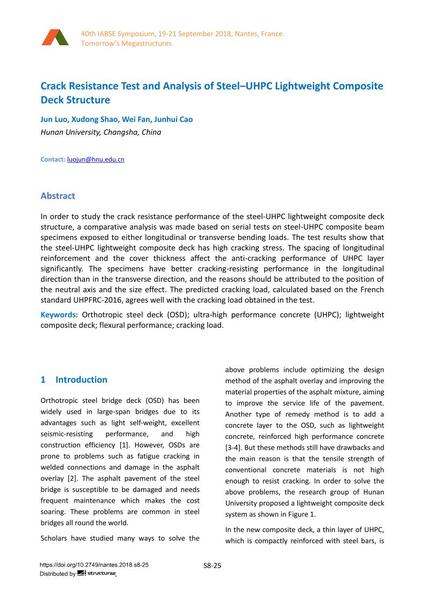Crack Resistance Test and Analysis of Steel–UHPC Lightweight Composite Deck Structure

|
|
|||||||||||
Détails bibliographiques
| Auteur(s): |
Jun Luo
(Hunan University, Changsha, China)
Xudong Shao (Hunan University, Changsha, China) Wei Fan (Hunan University, Changsha, China) Junhui Cao (Hunan University, Changsha, China) |
||||
|---|---|---|---|---|---|
| Médium: | papier de conférence | ||||
| Langue(s): | anglais | ||||
| Conférence: | IABSE Symposium: Tomorrow’s Megastructures, Nantes, France, 19-21 September 2018 | ||||
| Publié dans: | IABSE Symposium Nantes 2018 | ||||
|
|||||
| Page(s): | S8-25 | ||||
| Nombre total de pages (du PDF): | 8 | ||||
| DOI: | 10.2749/nantes.2018.s8-25 | ||||
| Abstrait: |
In order to study the crack resistance performance of the steel-UHPC lightweight composite deck structure, a comparative analysis was made based on serial tests on steel-UHPC composite beam specimens exposed to either longitudinal or transverse bending loads. The test results show that the steel-UHPC lightweight composite deck has high cracking stress. The spacing of longitudinal reinforcement and the cover thickness affect the anti-cracking performance of UHPC layer significantly. The specimens have better cracking-resisting performance in the longitudinal direction than in the transverse direction, and the reasons should be attributed to the position of the neutral axis and the size effect. The predicted cracking load, calculated based on the French standard UHPFRC-2016, agrees well with the cracking load obtained in the test. |
||||
